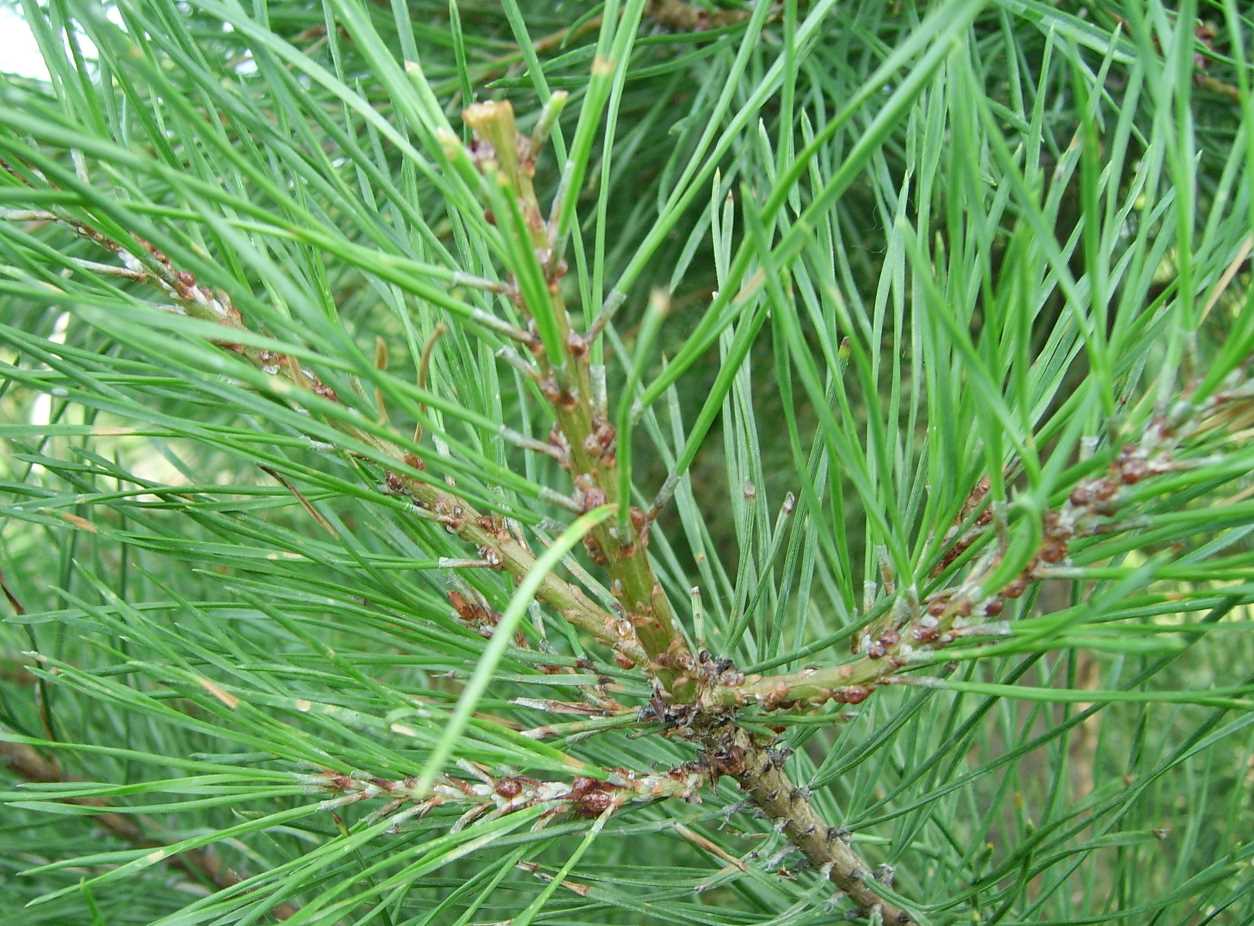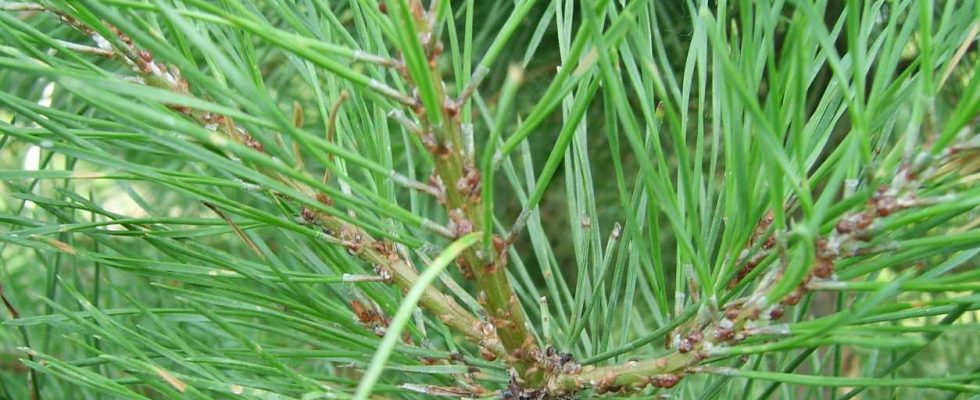
How did this pest get to us?
Until the 2000s, the presence of the pine turtle scale was limited to North America. But gradually, it moved back to Central America, then to the Caribbean.
In 2014, it was accidentally introduced into Italy, probably with the arrival of contaminated plants imported from these distant countries for commercial purposes.
It then decimated numerous umbrella pines in the cities of Rome, but also Naples. It is then observed for the first time in France in June 2021, first on pines in Saint-Tropez, then in Sainte-Maxime, Grimaud, etc. where many pines have died.
The Var department is now placed under surveillance to avoid the spread of the pine tortoise scale. This results in monitoring of trees, pruning of contaminated branches as soon as a report is made, stricter control of the sale of plants, the implementation of measures in affected municipalities, etc.
Learn more about the pine tortoise scale
The pine tortoise scale belongs to the Coccidae family and the order of Hemiptera which has nearly 4,000 species in Franceincluding bedbugs, cicadas, scale insects, whiteflies, aphids, etc. Insects of this order are insects with incomplete metamorphosis and are, for the most part, provided with a rostrum protecting a piercing-sucking stylus .
Description of the pine tortoise scale
Males and females are dissimilar both in their appearance and in their life cycle:
- The males : when they emerge from the larval state, they are equipped with wings which allow them to fly to the females to be fertilized. Adult males measure no more than 1.5 mm in length and have a brown shell mottled with white. They only live for a few days, as they die immediately after breeding. All this makes them more likely to go unnoticed.
- The females : adult females are larger than males since they can reach 5 mm long and 4 mm wide, but their shape and the color of their shell differ depending on whether they live on the branches or on the needles: in the first case, they have an oval shape and their carapace is brown to reddish in color with black patterns evoking a turtle shell, hence their name pine tortoise scale, while in the second case, they have a more elongated and their shell has a rather greenish color.
Life cycle
After spending the winter as a larva, the pine tortoise scale wakes up and feeds on sap until it is ready to lay around June.
A female can lay up to 500 eggs under her shell. Orange-colored larvae will be born from these eggs. The female larvae then go through 3 instars before reaching adulthood.
It is during the first stage of their larval life that they are most mobile. Beyond moving themselves to go a little further and settle permanently, they can then be transported by the wind or by animals.
Arrivals at adulthood, They will feed on the sap of the tree on which they are attached, mate, lay eggs and die, giving way to a new generation of larvae. If in North America, scale insects only produce one generation per year, in countries where the climate is warmer, such as Italy or the Côte-d’Azur, there are up to 3 generations per year.
Trees susceptible to pine tortoiseshell mealybug
Toumeyella parvicornis attack different types of pines, mainly umbrella pines, maritime pines, black pines and Scots pines. It is possible to see them on thin twigs, small branches, but also young shoots. The spread of turtle mealybugs seems to be by wind, birds or other animals, but also the trade of already contaminated plants.
The damage caused by the invasion of these pests
The damage caused by these mealybugs is of several types:
- Pine tortoise scales are biting-sucking insects, they prick the stems or needles to extract the sap, which, in the more or less long term, weakens the infested tree and leads to the death of the colonized branches, in fact, they begin by turning yellow, then dry out and die. The tree then becomes more sensitive to climatic hazards, diseases, but also other pests.
- Furthermore, the pine tortoise scale excretes honeydew, a sticky substance very popular with black micro-fungi, sooty mold. The danger of excessive development of these fungi comes from the fact that they appear in the form of a black powder which prevents photosynthesis, which further accelerates the dieback of the tree.
The fight against the pine tortoise scale is underway
In France, the fight against the pine turtle scale is still at the stage of finding solutions, but faced with the incessant increase in the number of infested trees, the first measures have been put in place:
- In March 2022, a ministerial decree was published. It prescribes the measures to be taken to “avoid the introduction and spread of Toumeyella parvicornis on the national territory”.
- In the Var department, nurseries, landscapers, garden centers are subject to obligations regarding planting, detection, pruning or felling of infested trees.
- At the individual level, it has also become obligatory to fight against the presence of pine tortoise scales. Therefore, pines must be closely monitored and, in the event of suspicion of an infestation, a report must be made to a professional, who will prune or fell the tree in question.
- The Labbé law prohibits the use of phytosanitary products in green spaces, it is necessary to resort to other solutions. The use of comma ladybugs is currently giving good results in the fight against the pine tortoiseshell scale. The advantage of this auxiliary insect is that it makes it possible to effectively combat this invasive cochineal in a biological manner. To ensure its effectiveness, it is necessary to introduce it in spring when the mealybugs are laying eggs.
- Concerning young pines, it is also possible to use biocontrol products based on rapeseed oil and sweet orange essential oil. By spraying the entire tree, they dry out and kill pine tortoise scales.

